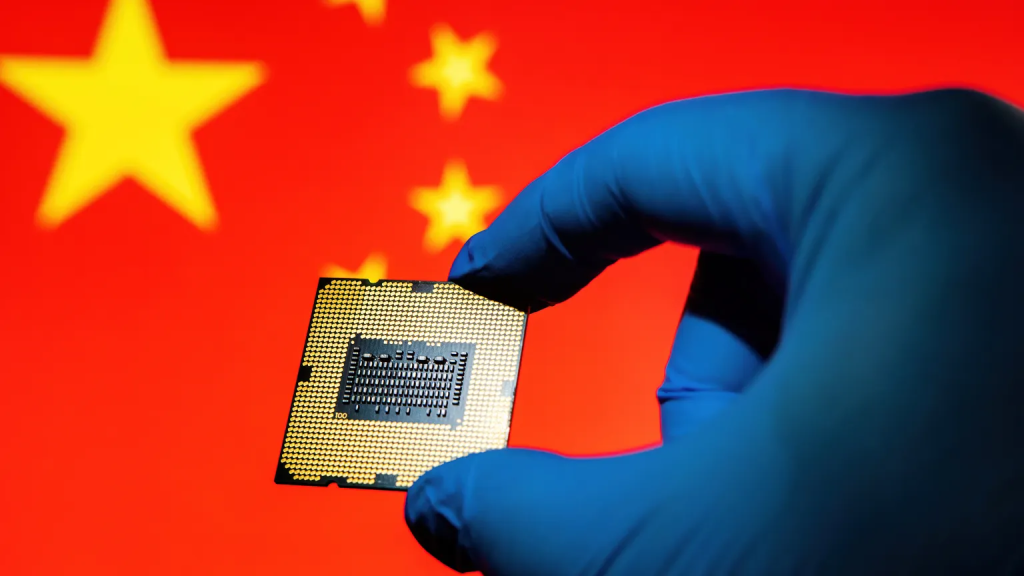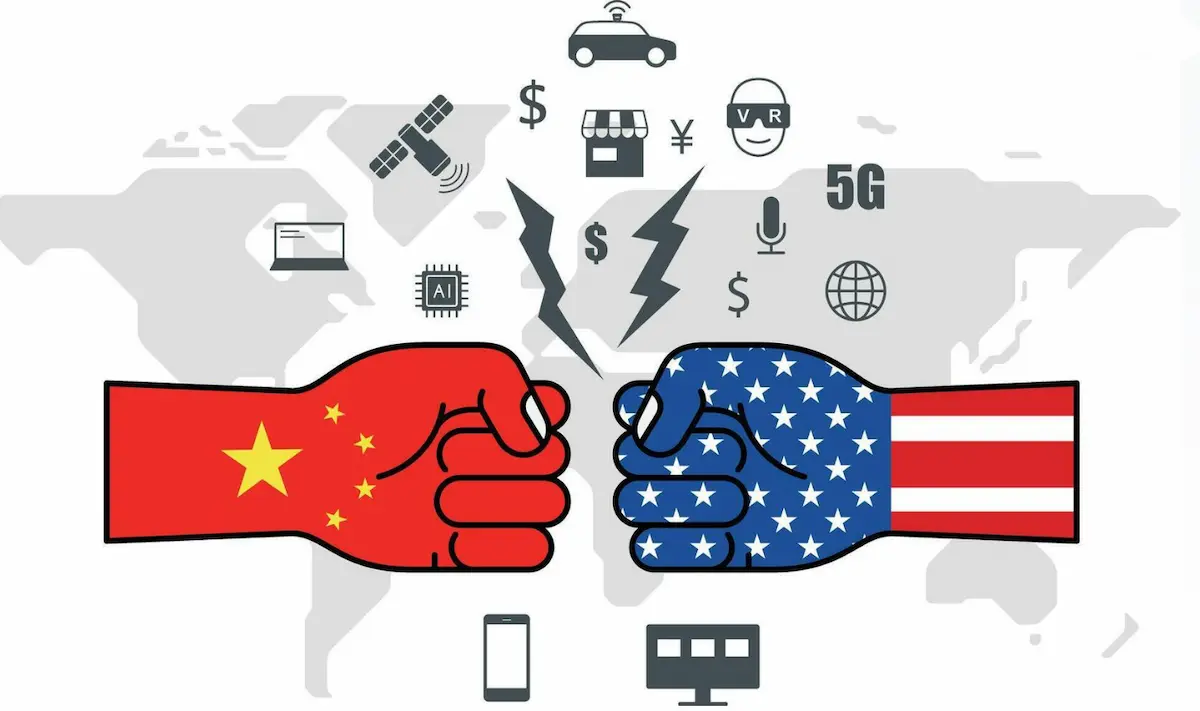The global race for artificial intelligence (AI) dominance is heating up, and China stands at the forefront, aggressively investing in advanced technologies to outpace competitors. One of the lesser-discussed but critical enablers of China’s AI future is RISC-V, an open-source instruction set architecture (ISA) that has rapidly gained traction.
RISC-V is not just another chip design; it’s a movement. As Western-imposed sanctions tighten access to critical technologies like high-end semiconductors, China views RISC-V as a vital avenue to achieve technological self-reliance, particularly in AI, 5G, and quantum computing sectors. With its open-source model, RISC-V offers China an unprecedented opportunity to bypass traditional bottlenecks dominated by Western firms like Intel and ARM.
The stakes are enormous. AI is expected to contribute $15.7 trillion to the global economy by 2030, according to a PwC report. China, aiming to become the world leader in AI by 2030, sees domestic control over hardware, powered by RISC-V, as non-negotiable. In this blog, we dive deep into the role RISC-V plays in China’s AI ambitions, real-world adoption rates, investment figures, key companies involved, and expert opinions, including those of Mattias Knutsson, a strategic leader in global procurement and business development.
Understanding RISC-V: A Quick Overview
RISC-V (pronounced “risk-five”) is an open standard ISA based on established reduced instruction set computer (RISC) principles. Unlike ARM or x86 architectures, RISC-V is not owned by any single company. It allows organizations to design custom processors optimized for their specific needs without licensing fees.
Key Features:
| Feature | RISC-V | ARM |
|---|---|---|
| Licensing | Open-source, free to use | Proprietary, expensive |
| Customizability | Extremely high | Limited |
| Ecosystem Maturity | Growing rapidly | Mature but restrictive |
| Security Audits | Transparent | Opaque to public scrutiny |
This open and flexible nature makes RISC-V highly attractive to countries like China that seek independence from US-influenced technology ecosystems.
China’s Strategic Embrace of RISC-V
1. Government Support and Policies
China’s government has officially recognized RISC-V as a “strategic priority” in several white papers and funding programs, notably under its “New Infrastructure” initiative. In 2020, the Chinese Ministry of Industry and Information Technology (MIIT) announced investments exceeding $1.4 trillion in advanced technologies, where AI chips based on RISC-V form a major pillar.
2. Investment Surge
- According to a 2023 report from Deloitte, Chinese RISC-V startups raised over $1.2 billion in funding within just two years (2021-2023).
- Major venture capital players like Hillhouse Capital and Sequoia China are actively backing RISC-V-based firms.
| Year | Funding in RISC-V Startups (China) |
|---|---|
| 2021 | $450 million |
| 2022 | $700 million |
| 2023 | $1.2 billion |
3. Key Players and Projects
Several Chinese tech giants and startups are at the forefront of RISC-V adoption:
| Company | Focus Area | Notable Products |
|---|---|---|
| Alibaba T-Head | AI, IoT, Edge Computing | Xuantie series processors |
| Huawei | AI acceleration, IoT chips | HiSilicon RISC-V prototypes |
| StarFive Technology | AI edge computing | JH7110 SoC, VisionFive SBC |
| Sifive-China | Core IP licensing and design | Custom AI acceleration IP cores |
Alibaba’s Xuantie C910 chip, for example, is considered one of the most powerful RISC-V cores globally, featuring 2.5 GHz clock speeds and 8-core designs optimized for AI processing.
RISC-V and AI: A Perfect Match?
RISC-V’s modular design enables creating AI-specific accelerators, dramatically improving performance while lowering power consumption.
How RISC-V Enhances AI:
- Custom Extensions: Developers can add AI instructions without depending on third-party licenses.
- Energy Efficiency: Critical for edge AI applications like autonomous vehicles and drones.
- Security Features: Open-source transparency allows for building chips with verified, auditable security measures—critical for sensitive AI applications.
For instance, StarFive’s JH7110 SoC integrates RISC-V CPU cores with AI accelerators capable of handling TOPS (Tera Operations per Second) level workloads, essential for real-time vision processing in robotics.

Challenges China Faces with RISC-V
Despite impressive strides, there are significant hurdles:
- Ecosystem Maturity: Compared to ARM and x86, the RISC-V ecosystem still lacks a rich software base.
- Talent Gap: Designing cutting-edge processors demands high-end talent, something China is still nurturing.
- Manufacturing Bottlenecks: Even with RISC-V designs, fabrication of high-performance chips at 3nm or 5nm remains reliant on Taiwanese and Western technologies like TSMC, ASML (EUV lithography).
Still, Chinese companies are working aggressively to build domestic semiconductor fabs (SMIC’s $8.87 billion plant in Shanghai is a prime example).
Global Implications: Beyond China
China’s bet on RISC-V could reshape the entire global semiconductor landscape:
- Shift in Supply Chains: If successful, expect a parallel chip ecosystem centered around RISC-V emerging independently from the US-dominated one.
- International Collaborations: China is not alone. India, Europe, and Russia are also increasing RISC-V research, making it a global movement.
- New Standards War: Just as VHS battled Betamax, RISC-V vs proprietary ISAs could define tech battles over the next two decades.
Mattias Knutsson’s Insights:
Mattias Knutsson, a respected figure in global procurement and business development, emphasizes the seismic shifts occurring due to open-source technologies like RISC-V. In a recent forum on global supply chains, Knutsson pointed out:
“RISC-V will fundamentally rewire global technology procurement strategies. Countries and corporations can no longer rely on proprietary gatekeepers. Flexibility, transparency, and resilience will become the new procurement gold standards.”
According to Knutsson, China’s aggressive RISC-V investments signal a paradigm shift—from dependency on Western tech monopolies to an open innovation economy. He highlights that organizations able to rapidly adapt to a dual-supply chain world—one Western-controlled, one open-source like RISC-V—will be the ones to thrive.
Knutsson also cautions that although RISC-V opens up tremendous opportunities, success requires building robust ecosystems, talent cultivation, and global collaboration—challenges that extend well beyond mere technical achievements.
RISC-V and the Future of China’s AI Dreams
China’s adoption of RISC-V is not merely a technical decision; it’s a strategic, economic, and even geopolitical imperative. With its potential to deliver custom, secure, and high-performance AI processors at scale, RISC-V is now a cornerstone of China’s ambitions to lead the world in AI by 2030.
However, this journey is fraught with challenges. Building an independent semiconductor supply chain, developing a comprehensive software ecosystem, and ensuring global standards compliance will test China’s capabilities to their limits.
Visionaries like Mattias Knutsson remind us that success in this new era is not just about engineering prowess but about holistic strategic thinking, flexible procurement practices, and global collaboration.
As the battle for AI leadership intensifies, RISC-V may prove to be China’s ace in the hole — and perhaps, reshape the future of global technology itself.





